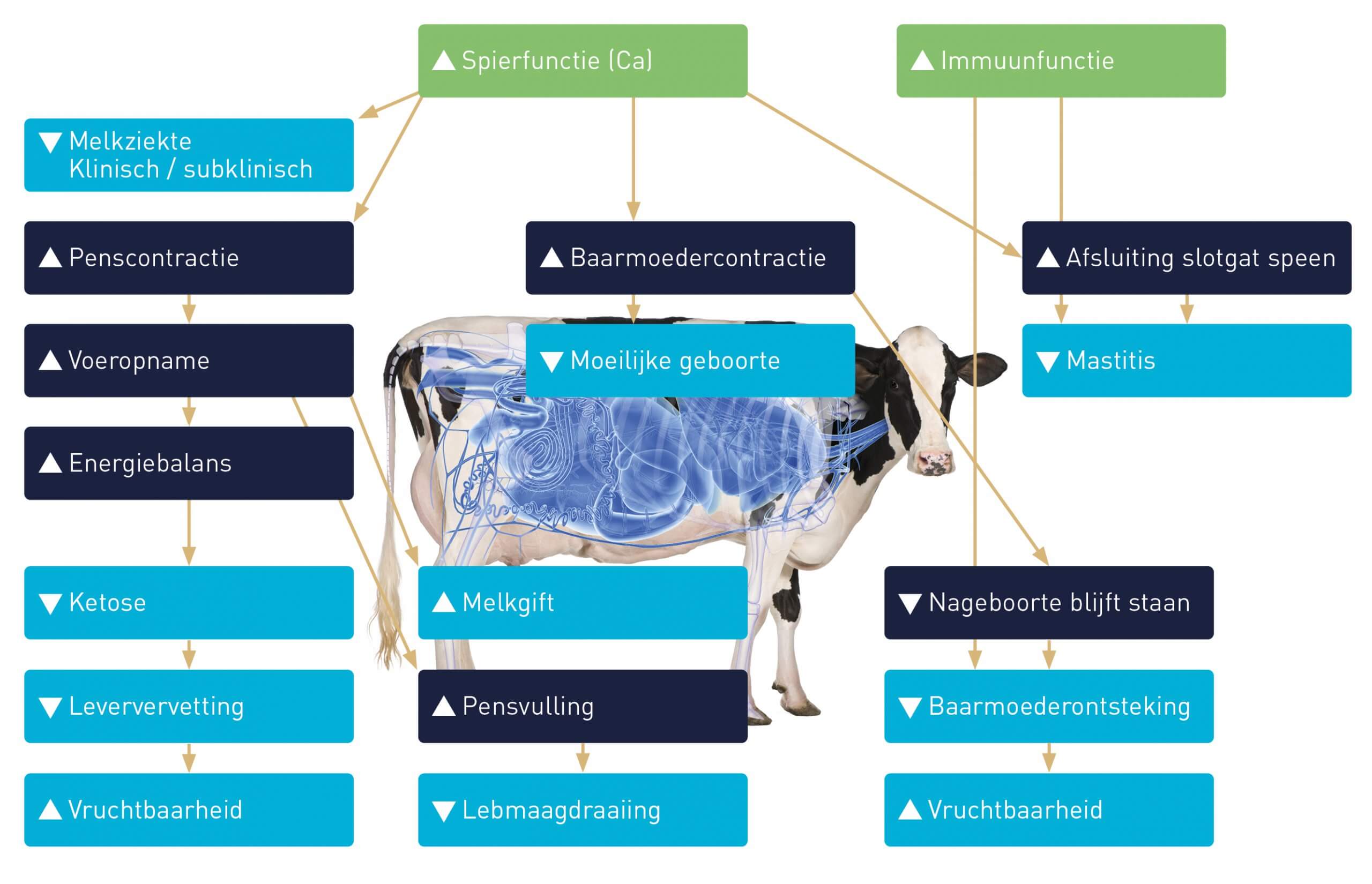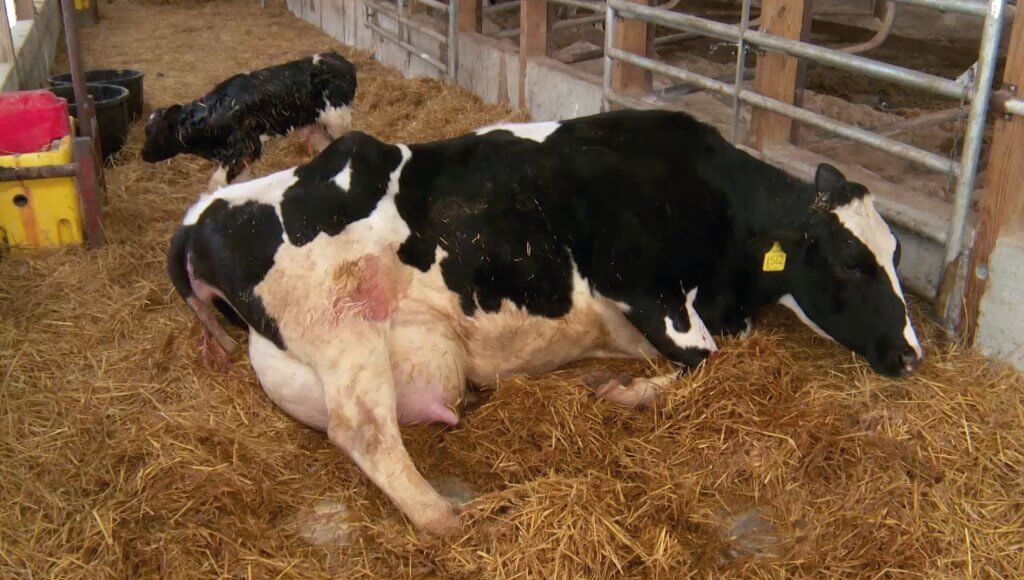A good lactation start is half the battle
Replacement of dairy cows is not voluntary in seven out of ten cases: The main causes of involuntary culling are mastitis, leg and claw problems and fertility problems.
After an average of 26 months, a heifer calves and enters lactation for the first time. Calving itself is a major event for the animal, with an increased risk of various disorders, including milk fever, energy shortages, claw problems, etc. This applies not only to heifers, but in particular to several calf cows. The dry period in particular is crucial to ensure that the lactation runs smoothly and as smoothly as possible.
The transition period, three weeks before to three weeks after calving, is the period in which the most problems occur, because many processes change in the animal during that time. Many diseases and disorders arise during this period. Calcium deficiency and energy deficiency can lead to many disorders in dairy cattle. Examples of this are milk fever, lingering milk fever, abomasum twists, udder infections, fertility problems, etc. The image below provides an overview of the most important processes and “domino effects” that take place in the transition period.

Bovenstaande afbeelding: Risico’s / domino-effect rondom afkalven (transitieperiode)
(▲= verhogend effect ▼= verlagend effect)
Calcium deficiency
Transition diseases around the start of lactation are strongly interrelated. It often starts with a low calcium level in the blood. A calcium deficiency is often the catalyst for other disorders after calving.
On a dairy farm, 20 to 60% of all dairy cows have some form of calcium deficiency around calving. Scientific research indicates that a case of milk fever costs around € 300. This includes costs of treatment and reduced milk yield.
A low calcium supply hinders muscle function. Insufficient muscle function has direct consequences on all processes in the animal where muscle contraction is important. Such as rumen contraction, uterine contraction during calving, but also closing the lock hole of a teat. The diagram above clearly shows the consequences of all this. It is important to do everything possible to get the animal’s calcium and energy levels up to a good level as quickly as possible!
Even before calving, the cow starts to produce milk, which increases the animal’s calcium requirement. However, the feed intake – and thus the calcium intake – lags behind and the absorption of calcium from the blood and bones is often also limited. This can lead to a cow having a calcium deficiency around calving, resulting in milk fever. Subclinical milk fever can also occur. The cow does get in its legs, but feed intake, rumen function and resistance are reduced as a result. Cows with calcium deficiency are more susceptible to metabolic and infectious conditions, including mastitis. This has to do with the fact that the muscle action is reduced, so that the lock hole closes less quickly, even after milking.
Phosphorus deficiency
The number of dairy cows with phosphorus deficiency seems to be increasing in recent years. Phosphorus, like calcium, is largely stored in the skeleton. During calving, the cow loses phosphorus through the growth of the fetus and through the milk. The lower feed intake around calving also reduces the supply of phosphorus, so that a shortage can easily arise. Phosphorus plays in many places in the body of the cow a role. In the fresh cow the most important function is the contraction of muscles. A shortage of phosphorus therefore leads to muscle weakness, which means that the cow has poor legs after calving. Also the functioning of the rumen is clearly a lot less in cows with a phosphorus deficiency. In practice, we almost always see a combination of a phosphorus deficiency with a calcium deficiency. Unfortunately, unlike calcium, phosphorus does not respond quickly to treatment. With a phosphorus deficiency we typically see cows that are alert, eating and no longer have cold ears. They just don’t get on their feet. These types of cows are described as “downer cows”. Furthermore, support with a comfortable lying area and pain relief is important to get the cow back on its feet quickly.
Milk disease: Prevention is better than cure!
The most important thing is the prevention of milk fever.
The basis is a balanced and tasty ration for dry cows, which is often offered fresh. The ration must contain sufficient magnesium. In addition, cows with an increased risk of milk fever can be supported as a precaution with boluses and cow drink, just before and after calving.
The treatment of milk fever is aimed at providing the animal with calcium as quickly as possible, depending on the seriousness of the situation. An administration of phosphorus is often also desirable here, because calcium and phosphorus are stored together in the body as a calcium phosphate complex. Magnesium also plays a role in this, because this mineral is also important for proper muscle function. If a cow remains lying down with milk fever, it is important to help her occasionally to get up in the legs, in order to promote the blood circulation in the body.
Know your risk cows
Give high-risk cows specific treatment so they can move on to the next lactation. Create a protocol for high-risk cows around calving. Ask your vet to help you create protocols.




